#TechFirst
Explore tagged Tumblr posts
Text
Empowering the UK Workforce: Training 7.5 Million in AI by 2030
In a major push to prepare the workforce for the rapidly evolving artificial intelligence (AI) economy, the UK government announced this week a £187 million investment in a national skills programme designed to equip young people and workers with essential AI and digital skills. At the center of the initiative is the “TechFirst” programme, which aims to introduce AI learning into classrooms and…
#AI#AI Economy#AI Talent#AI Technology#AI Training#Amazon#Artificial Intelligence#Digital#GenAI#Google#IBM#Microsoft#NVIDIA#research#TechExpert#TechFirst#Technology#TechYouth#Workforce
0 notes
Text
One of the staggering things the latest Cybertruck recall has revealed—other than Tesla’s use of the wrong glue—is that Elon Musk’s company appears to have sold 46,096 of these 7,000-pound electric pickups since customer deliveries began a little over 14 months ago. This is far fewer sales than Musk predicted for the Cybertruck just weeks before the rollout; he told investors that Tesla would soon sell 250,000 Cybertrucks per year.
On an earnings call a month before the November 2023 launch of the production vehicle, Musk boasted that Tesla had bagged “over 1 million” Cybertruck reservations and that “demand is off the charts.”
“Reservationists” initially paid $100 to join the queue, a refundable deposit later raised to $250. Car companies often open wait lists for models expected to outstrip supply, but most auto executives don’t expect that all of those who lodge deposits will follow through.
“The automotive industry aims for a conversion rate of around 2 to 16 percent” on reservations, Stephanie Valdez Streaty, director of industry insights for car tech firm Cox Automotive, tells WIRED.
By that reckoning, Tesla’s conversion rate is just under 5 percent. That’s at the lower end of the conversion scale, but many experts, used to Tesla’s stratospheric sales, might consider that a flop. Analysts generally don’t treat the world’s richest automaker like a regular car company. Its stock trades at many times earnings, valuing it multiples higher than companies that sell more cars.
If manufacturing capacity is any gauge of the sales numbers that Tesla was expecting, then the company must be sorely disappointed, because the Texas Gigafactory, where the Cybertruck is made, has the capacity to build more than 125,000 of the pickups per year. But, according to a Business Insider report from January, poor Cybertruck sales led to workers being taken off the “Cyber” production line and moved to a Model Y line.
Tesla’s current elevated worth is based not on its actual sales but on predicted sales of yet-to-be-launched robotaxis and humanoid Optimus robots, which—like the Cybertruck, slated to arrive three years before it went into production—could be several years away from being mass produced.
“My predictions have a pretty good track record,” Musk told Tesla staff at an all-hands meeting on March 20, but none of those present dared to ask him whether he had predicted the anti-Musk backlash that is tanking Tesla sales around the world.
And for all Musk’s bluster at the staff meeting that Tesla is “by far the most innovative company in the car industry,” it really isn’t. Chinese automakers such as XPeng, Nio, and Li Auto are far ahead of Tesla on autonomous driving and other technologies.
Waymo is already offering driverless taxi rides. Nor is Tesla the only company plotting a future for humanoid robots. In a recent TechFirst podcast, author Peter Diamandis stated there were 15 other companies also in this race—and none of those have a leader as controversial or as divisive as Musk.
“This year, we hopefully will be able to make about 5,000 Optimus robots,” said Musk. “That’s the size of a Roman legion. Which is like a scary thought. Like a whole legion of robots. I'll be like, ‘whoa.’”
Musk’s exuberance continued as he claimed Tesla would make “probably 50,000-ish [Optimus robots] next year.” He further claimed that Optimus “will be the biggest product of all time by far—nothing will even be close. It’ll be 10 times bigger than the next biggest product ever made. Ultimately, I think we’ll be making tens of millions of robots a year.” Seconds later, he upped the ante even further, stating that, no, Tesla would actually make “maybe 100 million robots a year.”
Grandiose predictions excite Tesla bulls who believe him when Musk says “I know more about manufacturing than anyone currently alive on Earth,” but back in the real world Musk is in charge of a car manufacturing company that can’t even spec the correct grade of panel glue.
Now on its eighth recall in the past 14 months—prior recalls involved failing windshield wipers, trapped accelerator pedals, and possible loss of power to the wheels—Musk’s polarizing polygonic pickups are in sales free fall. Month-over-month Cybertruck sales were down by 32.5 percent in February, according to estimates by Cox Automotive.
“The Cybertruck generated significant buzz with its unique design and ambitious specifications,” says Cox’s Streaty. “However, sales have fallen short of expectations due to higher-than-promised prices, lower driving range and payload capacity, and production issues. The unconventional design hasn’t resonated with traditional truck buyers, and strong competition from Rivian and Ford has intensified the market.”
The Cybertruck, she adds, is a “niche product with a unique design and high price point, which may not resonate with mainstream consumers. Additionally, recalls and quality concerns can significantly undermine customer confidence and sales, posing a substantial challenge for the Cybertruck’s market success.”
When unveiled in 2019, Musk promised the production vehicle would launch within two years, starting with a $39,900 model. At the actual launch in 2023, the base model cost $21,000 more than that. The Foundation Series model—an early-doors special—cost an additional $20,000 despite offering no physical differences other than a look-at-me logo. Nonphysical perks included lifetime cellular connectivity and “free” access to Tesla’s Full Self-Driving (Supervised) system.
Forbes spoke with experts who estimate that Tesla sank at least $2 billion into the development of the Cybertruck. A traditional car might need 200,000 units per year to cover the research and development costs, Olav Sorenson, professor of strategy and sociology at UCLA and faculty director of its Price Center for Entrepreneurship & Innovation, has estimated.
Sorenson calculates that the Cybertruck, with its stainless steel body panels and unconventional construction, might require as many as 300,000 sales per year.
At current levels of Cybertruck sales Tesla “probably loses money on every one,” claims Sorenson. “It’s an innovative vehicle, but whether such an unusual design would appeal to consumers has always been a gamble. The DeLorean, the original stainless steel car, sold only about 9,000 units. Even more mainstream cars with unusual designs, such as the PT Cruiser, have struggled to reach profitable sales levels.”
Sadly for Tesla, Musk’s wedge wagon went from a million or more reservations—which many thought would take some years to work through—to walk-up availability at dealerships within months.
This swifter-than-expected softening of demand might have been partly due to the Cybertruck’s now notorious quality-control issues. “When we launched reservations for the Valkyrie, we knew that this would be a highly desirable car due to its limited production and the personnel involved in the car’s development,” says former Aston Martin CEO Andy Palmer. “People could rely on Aston and knew [the new car] was something we’d deliver. For the Cybertruck, we’ve seen a string of delays and a moving of the goalposts, which conveys a lack of reliability, and if the OEM isn’t reliable, why should customers be?”
A reservationist from northern Maryland, who says he was sold early on Musk’s promise of an electric pickup, spoke to WIRED on condition of anonymity. “I was planning on buying a truck and wanted my next vehicle to be electric,” he says. “At the time, the Cybertruck was the only EV pickup that seemed like it would be available soon. I placed an order with $100 refundable for the mid-tier one, but then the Cybertruck took much longer than originally promised, so I canceled my reservation.” He didn’t regret this decision. “With the events of the last couple of years, and especially the last couple of months, I would never now consider buying a Tesla vehicle.”
The deal breaker for many reservationists was the cost hike. “The Cybertruck was promised to start at $39,990 when the initial reservations began—a stratospheric difference from the $99,990 Foundation Series trucks that were first available,” says Joseph Yoon, consumer insights analyst at the car-shopping website Edmunds. “Even the cheapest base model now has an expected base MSRP of $60,990, and it’s likely that not many customers are willing to bridge the vast pricing gap.”
Tesla sold merely 38,965 of the angular EVs last year, according to Kelley Blue Book estimates. In January, Tesla introduced discounts to clear Cybertruck inventories with Foundation Series models still in stock, a variant Tesla was supposed to have stopped selling in October.
Tesla is now offering low financing rates to move Cybertrucks. Indeed, it has reportedly buffed out the badges on Foundation Series vehicles that failed to find a buyer so they can be sold as regular models. To clear yet more Foundation Series Cybertrucks from inventory, Tesla dealerships have also listed perks such as free lifetime Supercharging. The electric pickups are even piling up on used-car lots.
President Trump publicly encouraging Americans to buy Musk’s cars at a White House sales event is unlikely to have moved the needle much—and Tesla, which did not respond to a request for comment on this article, is facing a “brand tornado crisis moment,” says Dan Ives, a Tesla bull. The company’s shares have dropped nearly 40 percent since the start of the year, erasing the value hike it enjoyed in December after the election of Trump, a victory bankrolled in part by Musk.
The subsequent animus directed at Musk adds to the many other challenges that Tesla faces, including—the refreshed Model Y Juniper excepted—a jaded lineup of offerings.
Any novelty bump that may have boosted the Cybertruck’s initial sales has now most certainly worn off. Earlier this year, a research note issued by Morgan Stanley cited “decelerating Cybertruck volumes” as a reason for expectations of lower 2025 Tesla volume growth.
Other analysts have also expressed concern, with the Cybertruck cited as a drag on Tesla’s value. Swedish billionaire and hedge fund manager Christer Gardell recently issued a stark warning about Tesla stock. Talking on Swedish TV, he said Tesla’s valuation could drop steeply.
“Tesla,” said Gardell, “is probably the most expensive stock on the global stock exchanges right now. It could go down 95 percent—and maybe it should go down 95 percent.”
While other analysts see Telsa as a tech company with massive potential for non-auto sales, Gardell sees merely a car company. He does not understand why the market treats Tesla with such reverence. Tesla’s “valuation is incomprehensible,” he told the EFN channel. A crash is coming, he believes. “It’s always hard to say when. It could happen in a month, six months, a year, three years, or five years.” But it was clear in the interview that Gardell thinks it is coming.
And, for all of Musk’s recent praise for the Cybertruck’s five-star overall safety rating from the National Highway Traffic Safety Administration—Musk has stated the Cybertruck is “apocalypse-level safe”—any Tesla market crash will at least partially be due to the lower-than-expected sales of the Cybertruck.
Ultimately, Tesla’s CEO might rue the day he categorized his predictions as having a “pretty good track record.” On a 2023 earnings call, Musk confessed that the auto brand had “dug our own grave with the Cybertruck.” If things for the brand continue on their current trajectories, he may well have got this one right.
18 notes
·
View notes
Text
Inside the race to build humanoid robots with Apptronik CEO Jeff Cardenas
How will we scale humanoid robot product to hundreds of thousands and millions of units? In this TechFirst we do a deep dive with Apptronik CEO Jeff Cardenas. We chat about Apptronik’s Apollo, his recent $400M+ funding round, the partnership with manufacturing giant Jabil, and much more. We also talk about innovations in AI that have accelerated robot learning and dexterous manipulation, the…
0 notes
Text
UK launches AI skills drive for workers and schoolchildren
Credit: cottonbro studio from Pexels The UK government is to team up with tech giants including Google, Microsoft and Amazon to train 7.5 million workers in AI skills, Prime Minister Keir Starmer is to announce Monday. Starmer is also set to unveil £187 million ($253 million) in funding to help develop tech abilities for one million secondary school students, as part of its “TechFirst”…
0 notes
Text
AI in Fitness Apps: Why It's a Game Changer
Artificial intelligence (AI) is transforming countless industries, and the fitness app development world is no exception. AI is being integrated into fitness apps and wearables, providing users with a more personalized, effective, and engaging experience.
Based on research data, the global fitness app development market was valued at USD 1.3 billion in 2022 and is anticipated to experience a robust CAGR of 17.6% from 2023 to 2030.
In this blog post, we'll explore how AI is revolutionizing fitness apps and why it's a total game changer.
Exploring AI's Role in Fitness Applications
Personalized Workouts and Training Plans
One of the biggest benefits of AI in fitness apps is the ability to create tailored workouts and training plans based on the user's individual goals, body metrics, and preferences.
For example, an AI-powered app like Fitbod analyzes your workout history and performance to generate a strength training program specifically for you. It takes into account your muscle groups, the equipment you have access to, and your recovery time between workouts. The workouts evolve as you provide feedback on which exercises you enjoy most.
The app Freeletics uses AI to offer users over 900 different workout variations depending on their fitness levels and desired training outcomes. Whether you want to build strength, lose weight, or improve endurance, the app will suggest personalized audio and video workouts.
AI plays a significant role in this aspect, as does the field of human psychology, as emphasized by Freeletics CEO Daniel Sobhani during a recent installment of the TechFirst podcast.”
This hyper-personalization means users are more likely to enjoy their workouts, stay motivated, and see better results. AI takes the guesswork out of building an effective training routine.
Intelligent Tracking and Monitoring
AI also enables fitness app development to track user stats better and monitor progress. Apps can now automatically log exercise type, duration, reps completed, weight used, heart rate, calories burned, and more.
For example, MyFitnessPal uses image recognition to identify foods and portion sizes to log your daily calories and nutrient intake accurately.
The Apple Watch uses its motion sensors, heart rate monitor, and proprietary algorithms to detect when you are walking, running, swimming, or dancing. It will then log these as workouts and provide customized metrics based on the type of exercise.
This intelligent tracking removes the need for manual data entry, which can be time-consuming and inaccurate. The rich performance data provided by AI empowers users to fine-tune their workouts and stay on track towards their goals.
Real-Time Feedback and Coaching
Fitness app development powered by AI can provide coaching in real-time during workouts through audio and video guidance. They analyze exercise technique, form, and posture and provide instant feedback to reduce injury risk and maximize effectiveness.
For example, the Mirror interactive home gym uses computer vision and machine learning algorithms to count reps, set pacing, identify improper forms, and suggest modifications.
Apps like Kayla Itsines' Sweat provide customized trainer tips and motivation based on your performance. If you are struggling during a workout, it will dial back the difficulty and intensity to ensure you complete the routine.
This AI-enabled coaching provides a safer, more results-oriented workout experience. The feedback helps you perfect your technique to smash your fitness goals.
Hyper-Personalized Nutrition Recommendations
In addition to workout guidance, AI in fitness apps can also provide tailored nutritional recommendations for optimal wellness. Apps like Precision Nutrition take into account your dietary preferences, food sensitivities, metabolism, and goals to generate a custom nutrition plan.
MyNetDiary leverages millions of data points to provide science-backed macro and calorie recommendations. It considers your age, gender, activity levels, and desired weight loss to determine your optimal daily intake.
The app Suggestic even scans restaurant menus and uses AI to recommend dishes that align with your nutritional needs and diet preferences.
By combining fitness tracking and nutrition guidance, these apps help users adopt healthier lifelong habits. The tech allows them to optimize diet and exercise in a streamlined, personalized way. However, some critics argue that over-reliance on these apps may hinder genuine self-awareness and a holistic understanding of one's health and well-being.
Gamification and Social Motivation
To boost engagement, many fitness apps are adding gaming elements and social features powered by AI. Leaderboards, challenges, virtual rewards and real-time multiplayer workouts tap into users' competitive drive and make fitness more fun.
For example, Strava allows you to compete against other runners and cyclists on popular routes and segments.
Zombies, Run! immerses you in an audio adventure to make your runs more entertaining.
AI determines how to match users of similar fitness levels for group challenges, recommend new friends with similar goals, and foster camaraderie. The social components enhance accountability and motivation to help users stick with their routines.
The Benefits are Just Getting Started
This is merely the tip of the iceberg when it comes to potential fitness apps for artificial intelligence. As the tech continues advancing, we can expect even more tailored workout recommendations, accurate biometric tracking, and insightful performance analysis.
AI will provide users with an increasingly frictionless path towards their wellness goals. It minimizes guesswork and manual effort so you can focus on building healthy habits that last. Apps powered by artificial intelligence make fitness regimens smarter, more engaging and hyper-personalized.
The fitness app development world will continue undergoing rapid digital transformation thanks to AI. This shift stands to benefit trainers and health professionals by enhancing client engagement and helping them deliver superior, tech-enabled services.
Conclusion
In summary, artificial intelligence is a total game changer for the fitness app development industry. AI-enabled apps and wearables provide users with 24/7 personalized training, intelligent tracking, real-time feedback, injury prevention, and more - all conveniently accessible from their pocket.
Developing Next-Gen Fitness Apps
To build truly next-level fitness apps that leverage the power of artificial intelligence, partner with leading technology solution providers. Leading mobile app development companies like Consagous Technologies have the expertise to develop multi-platform, AI-powered fitness app development with stunning UI/UX design.
Our full-stack fitness app developers and designers build secure, scalable apps customized to your business needs. We employ proven methodologies and the latest development tools to bring your fitness app vision to life quickly.
Get in touch with us today!
1 note
·
View note
Link
"The hilarious part is that this domination is what the tech giants, e.g., the Silicon Valley stormtroopers, wanted: tech everywhere. They natively assumed that their control would be maintained."
0 notes
Photo

What a sensational day, sailing, birthdays and an amazing sunset! Well Done Victoria, what a lovely state that you are, Cheers #sscbc #parisc55 #johngdryden #dmgsocial #techfirst #cybersecurity #portsea #sorrento #victoria #australia #coutaboats (at Portsea, Victoria, Australia) https://www.instagram.com/p/CJ3En6tH-lD/?igshid=1daufxzhu2rup
#sscbc#parisc55#johngdryden#dmgsocial#techfirst#cybersecurity#portsea#sorrento#victoria#australia#coutaboats
0 notes
Text
This Is The Highest Resolution Snowflake Photo Ever
https://sciencespies.com/news/this-is-the-highest-resolution-snowflake-photo-ever/
This Is The Highest Resolution Snowflake Photo Ever


One of the many photographs former Microsoft CTO Nathan Myhrvold has taken of snowflakes.
Nathan Myhrvold
Why would former Microsoft chief technology officer Nathan Myhrvold spend a year and a half building a custom 100-megapixel carbon-fiber super-cooled sapphire-lensed LED-lit super camera to take pictures of snowflakes?
Because he can.
Because he wanted to.
And … because snowflakes are much more important than we give them credit for.
“Snowflakes are something that we don’t think of as food, yet most of us in North America anyway, spend our whole summer drinking melted snowflakes, right?” Nathan Myhrvold told me on a recent episode of the TechFirst podcast. “Without snowflakes, we would have no water. It is the form of snow that allows us to meter it out over a period of many months.”
But most likely, just because it’s cool.
Myhrvold is not just the former CTO of Microsoft. He’s the author of multiple cookbooks detailing the art and science of cooking. He worked with Stephen Hawking on quantum theories of gravitation. He’s published peer-reviewed research on subjects as diverse as paleontology, climate science, and astronomy, and is currently working on a massive multi-gigapixel picture of the Milky Way galaxy.
MORE FOR YOU
(170,000 frames and counting, for that.)
And he’s been interested in photograph for a long time.
“When I was a kid, I saw pictures of snowflakes … these beautiful faceted crystals, almost like gems but more fragile than gems,” Myhrvold told me. “As I got older, I sort of learned why they look that way. I also became a photographer and I started taking pictures of food and of landscapes.”
It turns out that taking pictures of snowflakes is hard.
Really hard.
Listen to the interview behind this story in the TechFirst podcast:
Sure, there’s the obvious problem: melting. But snowflakes don’t just melt. They also sublimate, which is the direct transformation from a solid (ice) to a gaseous state without passing through the liquid water stage. And they can accrete: adding mass from atmospheric moisture. Plus, they’re small, they’re largely transparent, and the kind of light that you typically use to photograph things would actually melt them into an unappealing mush. Just to make the whole snowflake photography enterprise more fun, the best weather for finding and photographing them is a fairly frigid minus 15 to 20 Fahrenheit, or minus 26 to 29 Celsius.
So Myhrvold had to invent a camera system that connects to a microscope that can photograph his short-lived fleeting subjects.

Another of Nathan Myhrvold’s snowflakes.
Nathan Myhrvold
The tiny size means that his camera and microscope needed to be able to move closer or farther by just a micron at a time. A micron, or millionth of a meter, is legitimately tiny. Human hairs measure 80 to 100 microns wide, so the motors needed to be amazingly precise with very fine control.
Also, when you’re working in microns and you can’t fully control the temperature, the frame your camera and microscope rest on could contract or expand. You need something very strong and very stable, but you also need something that’s not made of metal that will grow or shrink according to the temperature.
Hence the carbon fiber, built by a company in Vancouver, Canada.
And light matters too.
“We tried using LED lighting, continuous LED lighting, and that just didn’t work,” Myhrvold says. “It was putting too much energy on the snowflake, and that meant it either melted or sublimated way faster than it should. The other problem is when you use continuous light, then you need to use the shutter in your camera. Well, but the problem with having the shutter is then that makes things shake, and that’s not a good thing.”
The solution came from a company in Japan that makes ultra-high-speed pulsing LED lights. Designed for factories that need to take very quick pictures of products on fast assembly lines for quality control, they could emit a pulse as short as a microsecond, one millionth of a second. Benefit one: no significant heat transfer. Benefit two: super-short pulses cancel out any impact from vibration that might be happening in the frame, camera, or microscope assembly.

No two snowflakes are completely alike. Here’s another Nathan Myhrvold photo.
Nathan Myhrvold
Adding to parts from the U.S., Japan, Canada, and doubtless other sources, Myhrvold added cooling: liquid refrigeration units from hyper-clocked gaming PCs. (Note: ordinary car antifreeze has a jello-like consistency at minute 20 degrees: Myhrvold needed a special antifreeze that stays liquid.) He also added artificial sapphire lenses for his camera (”eight times the thermal conductivity of glass,” he says) and a few other arcane elements.
Now he had a camera capable of taking quality snowflake pictures.
All that he needed was snowflakes. That was also a challenge.
“Most ski resorts are in places that are too warm — believe it or not — particularly where they put the accommodations is too warm,” Myhrvold says.
Solution?
Fly up to Alaska, and fly up to northern Canada. Timmins, Ontario apparently has perfect weather for great lake effect snow, plus a surplus of rental cottages with convenient porches. Fairbanks, in Alaska, also works, though it sometimes lacks falling snow even if there is snow on the ground. Alternatively, there is also photogenic snow in Yellowknife, Northwest Territories.
Bring the camera assembly, and start running around in the snow with a black foamcore board. If it’s windier, use a felt-covered board that’s stickier. If necessary, use a tiny paint brush, size triple-zero, build up a bit of static charge on it, and gently move the snowflake into perfect paparazzi position, ideally without touching it.
Then: take pictures.

Former Microsoft CTO Nathan Myhrvold
Nathan Myhrvold
Each snowflake pictured here is a combination of between 100 to 500 stacked shots. Snowflakes have some depth to them — perhaps 10 microns — so you need to move your camera in and out slightly to capture all the detail in focus. Most trips, Myhrvold says, last three to four days. In that time, he’ll take about 50,000 pictures with his 100-megapixel camera.
The result of all that effort is a few perfect pictures, captured in perhaps 200, 300, or even 500 stacked frames of 100 megapixels: the highest resolution snowflake photographs ever captured.
What’s next?
Possibly 3D.
Myhrvold says he may add a Fanbeam laser that can measure very fine differences in distance, much like a LIDAR sensor in a self-driving car, so that he can 3D print meter-sized versions for each snowflake. That would result in roughly three-foot wide perfect replicas of snowflakes: a potentially spectacular addition to most people’s home or office decor, particularly around Christmas time.
Which only leaves one question: why did Nathan Myhrvold start this quest in the first place? Because he can, and because he wanted to, sure. And yes, because it was cool.
But ultimately, to scratch an itch.
“I’m curious about things,” Myhrvold told me. “So I’m curious about finding things out, and trying to understand something that people don’t. Or trying to understand something that I don’t, you know, acquisition of a new skill, like learning how to deal with these snowflakes … well, that’s a learning thing.”
Which sounds like a great driving motivation for education in general. And the catalyst for an endless series of quests for knowledge … like the next project: a giant multi-gigapixel mosaic of the Milky Way.
Don’t count on that one being 3D-printable, though.
Get a full transcript of our conversation here.
#News
1 note
·
View note
Text
INDIA AMONG MOST ADVANCED COUNTRIES IN AI DEVELOPMEMT

India is among the most advanced countries in terms of development of Artificial Intelligence (AI) technologies for the Industrial Internet of Things (IIOT), according to a survey by Finnish AI-based solutions specialists Zyfra. The survey ranks the US first, followed by China, while India ranks 13th, just after Canada. The ranking is based on a study that examined the number and quality of scientific publications on the subject, a Zyfra statement said on Tuesday. It takes into account studies about AI in more than 200 countries and in the 50 most cited scientific magazines. The study has also highlighted the long gestation period required in India in bringing the research from paper to implementation stage. “In India it takes a lot of time from the achievement of new frontiers in the academic field to the beginning of the successful practical application of corresponding methods,” the statement said. “A very important research on the use of convolutional neural networks for semantic segmentation was published in 2015, but it was not until 2017 that the work on implementing this method in steelmaking began,” said Zyfra Business Director (AI) Dmitriy Lukovkin. Last month, Zyfra unveiled its manufacturing data collection (MDC) plus system in India, the statement said. “It is a real-time machine monitoring and with hundreds of customizable reports and charts that can be used to track jobs, parts, operations, work centres, scrap costs, downtime and people,” it said. Zyfra, which has an Indian arm, plans to sign contracts for more than $2.5 million with Indian firms working in the machine-building, aircraft and steelmaking industries, the statement Read the full article
#Ai#ARTIFICIALINTELLIGENCE#INDIAAMONGMOSTADVANCEDCOUNTRIESINAIDEVELOPMEMT#Intelligenceadtificial#Intelligenceartificial#Techfirst#Techfirstwebsites#Technewstopwebsite#Technologynewsfirst#Topwebsitesontechnews
0 notes
Text
0 notes
Link
Everybody needs to get paid for sitting idle. Novel venture capital group from Estonia, Single Earth has discovered the perfect path for land owners to do precisely that.
Furthermore, you don't need to be a Wall Street mutual funds shorting stock or part of a Reddit speculation crowd to get it going.
The objective of this Estonia based Startup: saving the planet.
The apparatus: blockchain, tokenization, and a stock trade for characteristic worth. The outcome? The world's first nature-supported monetary instruments, as per CEO Merit Valdsalu.
"Single Earth is an online stage that empowers timberlands, wetlands, and other regular assets to produce benefits without being sold as crude materials … yet rather as carbon balances and biodiversity counterbalances," Valdsalu advised me as of late on the TechFirst webcast.
0 notes
Photo

(video) Helm.ai CEO Vlad Voroninski connects with TechFirst host John Koetsier Read more: https://www.selfdrivingcars360.com/video-helm-ai-ceo-vlad-voroninski-connects-with-techfirst-host-john-koetsier/
0 notes
Text
This personal AI is your 'twin mind'
Would you want a personal AI that acts as your twin mind? I’ve always dreamed of never forgetting anything. And instantly and effortlessly remembering anything I need, right away. Now, an AI-driven app called TwinMind might help me do something similar. In this episode of TechFirst we chat with Daniel George, the CEO of TwinMind. This innovative AI app aims to become your second brain, capturing…
0 notes
Text
Is Discover Mobile App Still Relevant? | discover mobile app
Apple’s adaptable App Abundance in iOS 14

Discover Mobile – Apps on Google Play – discover mobile app | discover mobile app
Every acknowledged belvedere has its celebrity days.
For the iOS App Store, it was the aboriginal years afterwards the barrage about 12 years ago back alike a fart app could be acknowledged and cull in added than bisected a actor installs. For Google Play, it was in the years afterwards 2012 back there weren’t millions of apps on the belvedere yet.
Today, things are different.
And it’s one of the affidavit why — forth with belvedere shares of acquirement — Apple in accurate is adverse accretion antitrust scrutiny. And why Apple was afresh in the account for all the amiss affidavit as the aggregation alone Basecamp’s Hey email app mostly over banking reasons, about blame it off the App Abundance afore an eleventh-hour deal.
Because you’ll pay added as a adaptable developer for advance than for simple distribution.
“Back in the day, bodies would go in the App Abundance and think, wow, like, let’s see what’s there. Let’s ascertain new stuff,” Denys Zhadanov told me afresh on the TechFirst podcast. “Now it has adapted into a administration model, it’s not about analysis anymore.”
Zhadanov is a VP at Readdle, which has seven top-30 apps on the App Abundance including Spark, an email app, Scanner Pro, and PDF Expert.
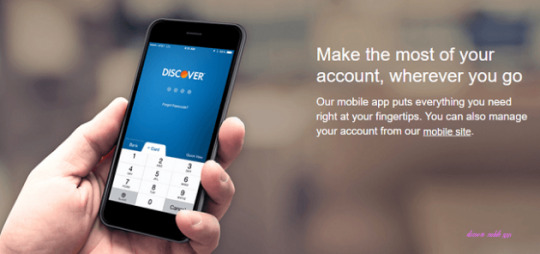
Discover Certificate of Deposit 84 Month Term Review: Earn .. | discover mobile app
That’s inevitable, ultimately.
Even admitting iOS 11 was advised to adapt the App Abundance and access analysis of new apps with new chase and new content, back you accept over nine actor apps on the two above platforms, it absolutely doesn’t amount how acceptable Google Play or the App Abundance is: there’s aloof too abundant for any alone app to angle abundant adventitious of accepting noticed.
Which doesn’t beggarly either the App Abundance or Google Play are abhorrent now.
Quite the opposite. Frankly, the absurd advance of TikTok shows — admitting contempo challenges in India — that there’s no belvedere absolutely like avant-garde adaptable platforms for massive accelerated growth.
“The App Abundance ecosystem is a amazing and astounding abode for developers from all the altered locations in the apple to [create] article amazing and administer that to 1.5 billion devices,” Zhadanov says.
One of the challenges, however, is that the Google Play and App Abundance guidelines accept not necessarily kept up with alteration business models. The Basecamp email app was a cable app: if Basecamp had congenital it application the App Abundance for payments, Apple would accept taken a 30% cut of revenue, bottomward to 15% in consecutive years.
Google has a agnate fee anatomy in place.
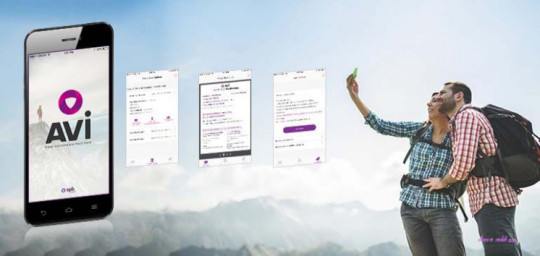
Mobile app : Discover the AVI mobile app – AVI International – discover mobile app | discover mobile app
“There is no adventitious in blood-soaked hell that we’re activity to pay Apple’s ransom,” Basecamp’s CTO David Heinemeier Hansson tweeted. “I will bake this abode bottomward myself, afore I let abyss like that circuit it for spoils. This is profoundly, perversely calumniating and unfair.”
Think administration against discovery.
If analysis is the model, a belvedere or account is allowance new users who would never accept accepted about you ascertain what you do. That brings new money into your pocket, and for that service, a 30% fee isn’t prohibitive. It’s a commission, essentially, that drops to 15% in afterward years. Afterwards all, new barter are new barter … and it costs some money to run an adaptable app store, afterwards all.
But if it’s aloof about administration — a abundant added hands-off archetypal that about irenic transfers a artefact from a ambassador to a chump — the 30% seems expensive.
(Especially back there’s about a abstruse Apple affairs for too-big-to-ignore players like Netflix and Amazon Prime Video that bypasses any fees at all.)
This accomplished affair has big implications for the antitrust affect that Apple’s adverse in Europe. One big affair is whether the cable fees it wants to allegation a aggregation like Spotify, which competes with Apple Music, are a aggressive disadvantage. Afterwards all, does Apple Music accept to pay the iOS App Abundance a 15-30% agency on chump sign-ups?
And if it did, would Apple Music be assisting in and of itself? That’s acceptable a austere catechism for Europe’s antitrust lawyers.

Melissa Fumero fat ass – 9GAG – discover mobile app | discover mobile app
As far as Readdle is concerned, however, Apple’s cable appraisement isn’t awfully unfair. At atomic for them.
“I do accept that’s accomplished for some businesses for example, area the margins are cool high, like for archetype ourselves,” Zhadanov says. “When it comes to Spotify, right, it aloof makes or break their business.”
Spotify, of course, operates a music business (and a growing podcast business). The music alive business is awfully low-margin, and Spotify has had agitation axis a accumulation for years.
A sliding calibration ability accomplish added faculty for lower-margin businesses, and ability be added acceptable to businesses like Basecamp, which don’t appetite to duke a third of revenues over to Apple — or Google for that amount — aloof for hosting their apps on a store. And it ability stop some of the loud and awful hassles in the app acquiescence process.
Especially if there’s one appear and accessible appraisement archetypal for everyone, rather than loopholes for behemothic corporations.
Get the abounding argument of Zhadanov and my chat here.
Is Discover Mobile App Still Relevant? | discover mobile app – discover mobile app | Pleasant to help my personal blog, in this particular occasion I will demonstrate about keyword. And after this, this is actually the initial graphic:

Discover Topic’it : the mobile app of your forum ! – discover mobile app | discover mobile app
How about picture preceding? is actually which remarkable???. if you think maybe therefore, I’l t demonstrate a number of photograph again down below:
So, if you like to have the wonderful photos about (Is Discover Mobile App Still Relevant? | discover mobile app), click on save link to store these pictures in your pc. They’re ready for down load, if you appreciate and want to grab it, just click save badge in the page, and it will be directly saved to your notebook computer.} At last if you need to grab unique and the recent image related with (Is Discover Mobile App Still Relevant? | discover mobile app), please follow us on google plus or bookmark this website, we attempt our best to present you daily up-date with fresh and new pictures. We do hope you love keeping here. For some updates and recent news about (Is Discover Mobile App Still Relevant? | discover mobile app) pics, please kindly follow us on twitter, path, Instagram and google plus, or you mark this page on book mark section, We attempt to give you update periodically with all new and fresh pictures, like your exploring, and find the perfect for you.
Here you are at our website, articleabove (Is Discover Mobile App Still Relevant? | discover mobile app) published . At this time we’re delighted to declare we have discovered an extremelyinteresting topicto be reviewed, that is (Is Discover Mobile App Still Relevant? | discover mobile app) Most people searching for information about(Is Discover Mobile App Still Relevant? | discover mobile app) and definitely one of these is you, is not it?
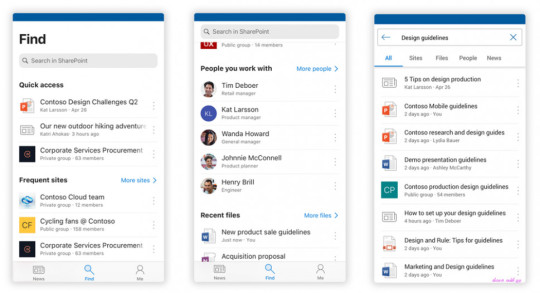
SharePoint mobile app updates – find and discover people, content .. | discover mobile app
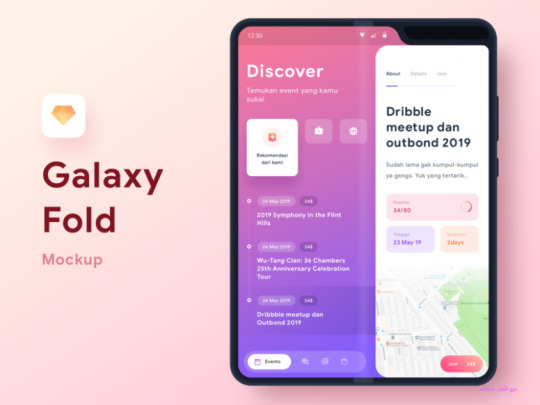
Discover designs, themes, templates and downloadable graphic .. | discover mobile app
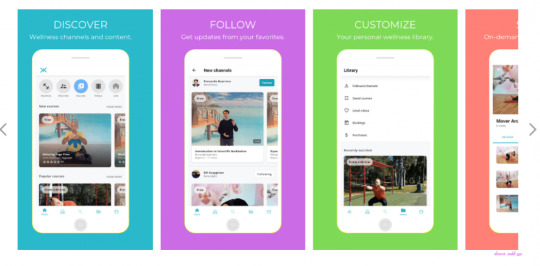
Helt’s mobile app is available: home and gym workouts available in .. | discover mobile app
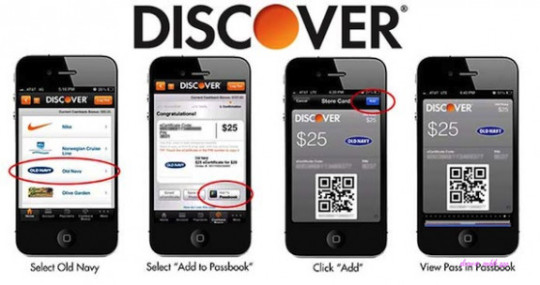
Discover updates Mobile app with Passbook support – discover mobile app | discover mobile app

monet_water_lily_pond_evening_left_panel_1926 – discover mobile app | discover mobile app

News14 has a new mobile app – discover all the exciting new .. | discover mobile app
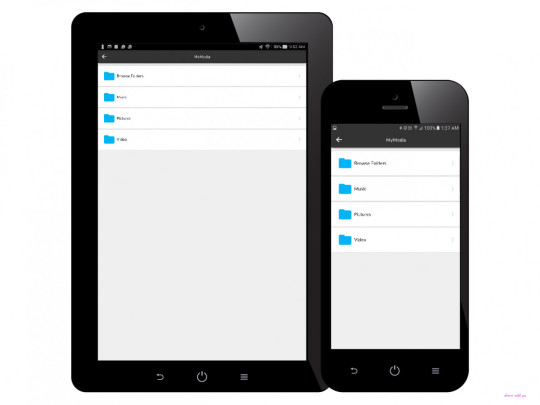
Mobile App Landing Page | Apps | Discover | Home | NETGEAR – discover mobile app | discover mobile app

Discovery Benefits Mobile – Apps on Google Play – discover mobile app | discover mobile app

Datamine Discover Mobile – Apps on Google Play – discover mobile app | discover mobile app
from WordPress https://www.visaword.com/is-discover-mobile-app-still-relevant-discover-mobile-app/ via IFTTT
0 notes
Text
Blockchain For The Advertising Industry
If it’s the opposite, that’s exactly according to plan.
“With Brave and the Basic Attention Token, we’ve tried to take the ads and the technology behind ads that people don’t like, and clean out all the bad things, the tracking, the sort of parasites, the high fee extraction from the middle players, and simplify the system to the minimum required components,” Brave CEO Brendan Eich told me recently on the TechFirst podcast. “The problem is that those ads depend on tracking, and the super powers like Google that came to dominate tracking, came to dominate the terms of the ad deals. They came to dominate everything about your digital life.”
Brave is a browser, just like Chrome or Safari or Firefox. But in Brave you can opt into ads rather than attempt to opt out with an ad blocker, as huge percentages of people are doing elsewhere. It’s privacy safe, so even though advertisers know someone’s engaged with their ads, they can’t track you around the internet.
https://www.google.com/amp/s/www.forbes.com/sites/johnkoetsier/2020/07/25/ads--privacy--blockchain--crypto--the-future-is-now/amp/
0 notes
Text
Zoho Launches Remotely, a Collaboration and Productivity Platform
Zoho Remotely is a suite of cloud applications to help you communicate and collaborate with your team. No matter where you are in the world it will keep track of your workload as well as provide remote assistance to your customers.
Ironically enough, the launch of Zoho Remotely comes when the world is scrambling to find a workaround for the coronavirus in their workplace. With that in mind, the company is making Zoho Remotely available free of charge to anyone and everyone who needs remote working tools in light of the epidemic.
What is even more ironic is Zoho Remotely was built remotely in less than a week. This is what Zoho chief evangelist Raju Vegesna told John Koetsier on the TechFirst podcast on March 6, 2020. Vegesna said Remotely didn’t even exist before Monday of that week.
You can watch the Koetsier/Vegesna interview on YouTube below.
The 11 apps in Remotely will be available for free until July 1st, with the hope that the virus will be under control by then. However, Zoho says it will easily extend the offer if necessary. Furthermore, Zoho is making the full edition available not the freemium version.
Kudos to Zoho for doing its part to help companies around the world and not try to profit from a bad situation.
How Effective is Zoho Remotely?
Zoho is currently using the suite of cloud applications with its 8,000+ workforce across the globe. Vegesna says Remotely is made up of 11 tools categorized in Communication, Collaboration, Remote Assistance and Productivity.
Together the 11 apps deliver a comprehensive suite of collaborative tools for addressing everyone from the CEO to the customer.
Communication
image: cliq
Cliq
Cliq is a real-time messaging and file sharing between team members and departments. Everyone can share files of any format in the chat window in seconds. This means you can make decisions instantly and come up with a solution like Zoho Remotely without wasting precious time.
Cliq also offers public and private channels, audio and video calls, secure and searchable chat history, integration with other software, and create useful and sophisticated bots.
Meeting
An online and meeting and webinar solution for holding presentations, record sessions, and downloading reports.
This includes the ability to:
Conduct secure meetings with privacy
Send emails, get RSVPs and embed meeting links
Hold discussions over audio, video, and chat
Present with screen sharing and remote control
Manage live meetings
Record, replay, share, and download
Showtime
Showtime is a training solution with real-time engagement using learner-centric features. By bringing together experts, teachers, managers, and other resources together, Showtime can put them all in one place as co-trainers/presenters.
The application features session recording, screen-share, whiteboard, and open mic. You can also use the evaluation and survey tool along with the engagement analytics to get the most out of each session.
Collaboration
image: workdrive
WorkDrive
With WordDrive you can manage your team’s file online so you can work together be available anytime.
Work as a team and administer your team on a secure platform you can trust to ensure your privacy. WorkDrive encrypts your files during transit and at rest with a platform that complies with ISO 27001 and SOC 2 Type II security standards.
Projects
Projects allows you to plan and track your work while collaborating with your team to get your projects done on time.
You can take a look at the big picture with Gantt charts and automate tasks to save time. Create personalized fields, layouts, statuses, and workflows to carry out tasks specific to your projects and log every minute with timesheets.
Sprints
One of the challenges of working with teams is planning and tracking each activity. Without the right solution, redundancy becomes the norm.
Sprint lets you track progress on the board, account for all your time, and get a quick pulse of the project. The combination of other Zoho integrated suite of tools as well as third-party apps means you can bring in solutions you are familiar with to make your projects even more effective.
Remote Assistance
image: assist
Assist
Supporting the needs of your customers shouldn’t demand a call center. With Assist, you can support your customers through the web-based, on-demand remote support sessions.
You can deliver on-demand remote support, unattended remote access, voice and video chat, file transfer and more.
Lens
Zoho Lens lets you see the problems your team or customers are experiencing. You can access the user’s smartphone camera at a remote location from your desk to identify issues and solve problems.
Lens provides live camera streaming, highlighting on 3D objects, VoIP and text chat, snapshots, freeze image and session recording.
Productivity
image: writer
Writer
Writer is a powerful word processor for creating professional documents while you collaborate with your team in real-time.
You get Zia, a writing assistant with contextual grammar, readability and style suggestions as well as review & approval, WordPress integration and more tools for work.
Sheet
Zoho Sheet is a spreadsheet with the latest tools for analyzing your data with fewer mistakes. And as all of the tools in Remotely, you can share it with your team and collaborate in real-time.
Show
Show makes it possible to create and present your ideas anytime and anywhere. It is as easy as picking one of the themes, use the authoring slides to guide you with the contextual UI, and translate your story into slides.
Add images, videos, graphs, tweets, and animation and you can share, publish and broadcast your creation on internal and external channels including websites, blogs, social media, and much more.
Get Zoho Remotely now for free.
Image:Zoho Remotely
This article, “Zoho Launches Remotely, a Collaboration and Productivity Platform” was first published on Small Business Trends
https://smallbiztrends.com/
The post Zoho Launches Remotely, a Collaboration and Productivity Platform appeared first on Unix Commerce.
from WordPress https://ift.tt/38Da7lP via IFTTT
0 notes